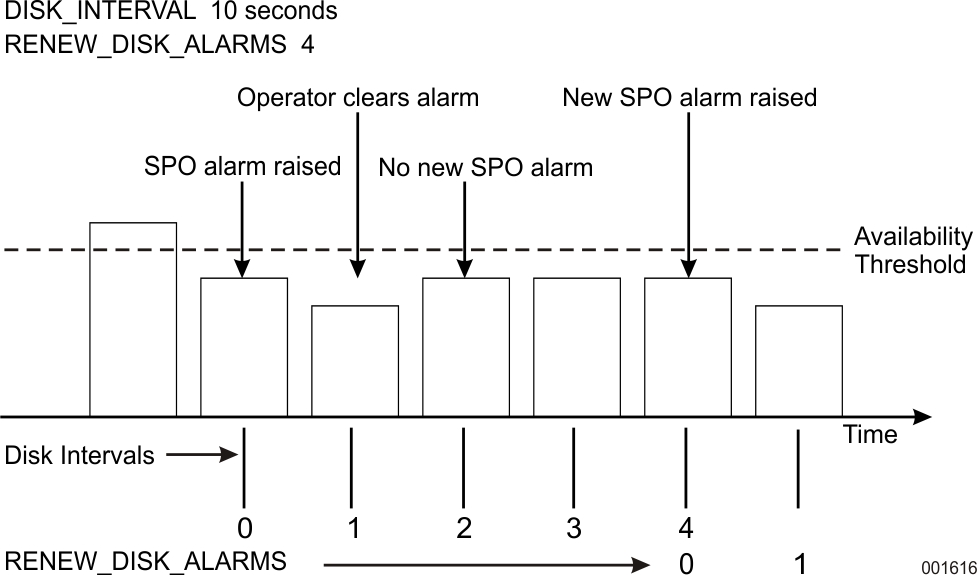The interface software raises an alarm the first time the available disk space drops below the set threshold. The alarm is not raised again until the available space reaches or exceeds the threshold and then drops below again. This presents the possibility that an operator will clear the alarm without fixing the space problem. In this situation, the alarm may not be raised again and could ultimately lead to running out of disk space.
To prevent this, you can specify the RENEW_DISK_ALARMS parameter in the configuration file (see Section 3) or enter the command RENEW_DISK_ALARMS (see Section 5). When specifying this parameter or command, you set number–of–intervals to the number of intervals that you want the interface software to wait before reraising the alarm for a threshold violation.
In Figure 4–1, an Operations Sentinel alarm is raised and RENEW_DISK_ALARMS is reset to 0. The disk interval is 10 seconds. When the operator clears the alarm, no new alarm is sent, even though the disk space availability remains below the configured threshold. After the alarm has been incremented, the number of disk intervals to RENEW_DISK_ALARMS (in this case, four 10-second intervals), the interface software resends the alarm message, and Operations Sentinel raises the alarm again.
